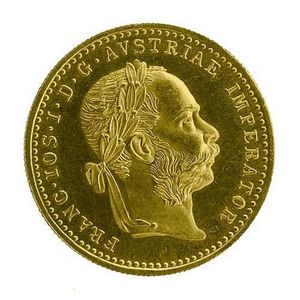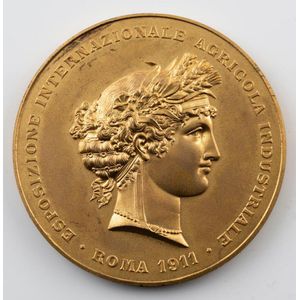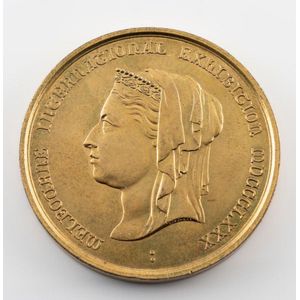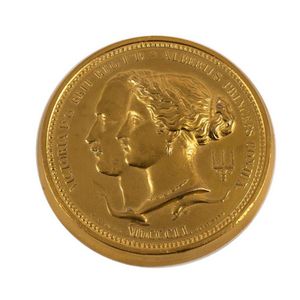Gilded porcelain intaglio medallions from 19th century expositions
You must be a subscriber, and be logged in to view price and dealer details.
Subscribe Now to view actual auction price for this item
When you subscribe, you have the option of setting the currency in which to display prices to $Au, $US, $NZ or Stg.
- Gilding - Gilding is a method of ornamentation whereby a thin sheet of gold metal is applied to items made of wood, leather, ceramics, glass and silver for decorative purposes.
For furniture including mirrors, the sheet of gold is usually applied over a coating of gesso. Gesso is a mixture of plaster of Paris and gypsum mixed with water and then applied to the carved wooden frames of mirrors and picture frames as a base for applying the gold leaf. After numerous coats of gesso have been applied, allowed to dry and then sanded a coat of "bole", a usually red coloured mixture of clay and glue is brushed on and allowed to dry, after which the gold leaf is applied. Over time parts of the gilding will rub off so the base colour can be seen. In water gilding, this was generally a blue colour, while in oil gilding, the under layer was often yellow. In Victorian times, gilders frequently used red as a pigment beneath the gold leaf.
Metal was often gilded by a process known as fire gilding. Gold mixed with mercury was applied and heated, causing the mercury to evaporate, the long-term effect of which was to kill or disable the craftsman or woman from mercury poisoning. The pursuit of beauty has claimed many victims, not the least of which were the artists who made those pieces so highly sought after today. - Bronze - An alloy of copper and tin, traditionally in the proportions of about 9 parts of copper to 1 part of tin.
The discovery of bronze in Western Asia in the 4th century enabled people to create metal objects which were superior to those previoulsy possible because of its strength and hardness, and it has been used throughout the world for weapons, coins, tools, statuary and other decorative items.
It is very fluid in a molten state, and its hardness, strength when set, and non-corrosive properties makes it most suitable for casting sculpture. - Intaglio - A term used to define a method of decoration most common in glassmaking and jewellery which involves engraving, carving or moulding an image into the background, leaving an impression, and leaving the top surface of the item flat, the opposite to relief carving, and also know as counter-relief.
This item has been included into following indexes:
Visually similar items

An Austrian 1 Ducat gold coin; 1915 restrike coin in 22ct gold. Wt. 3.5g

Three medals Exposicion Internacional De Barcelona, 1929, a gilt metal medal by H.Parera. In original brown leatherette case (4.9 cm) To be sold with Esposizione Internazionale Agricola Industriale Roma, 1911, a gilt bronze medal (6 cm) Also Exposicion Uni

Gilt-Bronze medal (76 mm), Queen Victoria veiled bust left by Stokes. Uninscribed.

1966 Queen Elizabeth II sovereign, aUnc.
